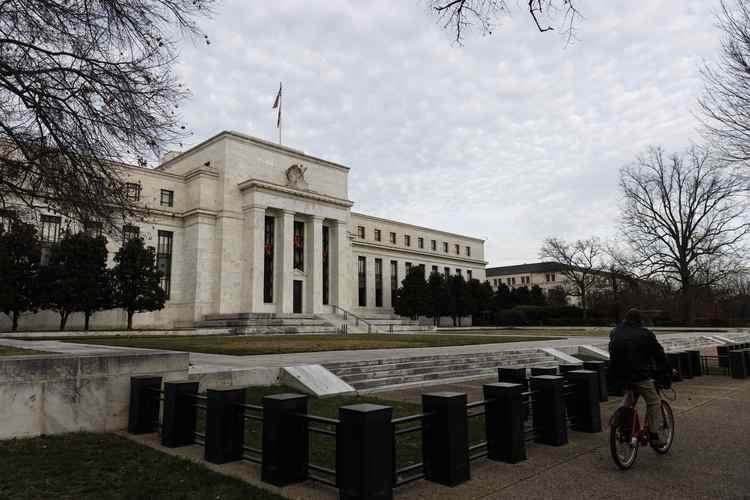
Recently, expectations of the Federal Reserve cutting interest rates have intensified due to fluctuations in economic data and differences among officials. CME data shows that market expectations for a 25 basis point interest rate cut in September have risen to 89.4%, a significant increase from a week ago. This expectation stems from the "surprise" of the US July non-farm payroll data - only 73,000 new jobs were added, far below expectations. Moreover, the data for the previous two months was revised down by nearly 260,000, marking the highest correction since 2020. Although the core CPI rose year-on-year to 2.9%, market inflation expectations marginally cooled, and the inflation expectation indicated by the 5-year swap rate dropped to 2.4%. This combination of "weak employment and moderate inflation" provides a reasonable basis for interest rate cuts, but it also raises questions about the reliability of the data.
The divergence within the Federal Reserve over interest rate cuts has become increasingly evident. St. Louis Fed President Moussa Lem insisted that "the conditions for a rate cut have not yet been met", while Governor Waller publicly supported a rate cut in September and called for three rate cuts within the year. The shift in stance of Vice Chair Bowman is particularly notable - this official, who once advocated "respecting independence", now accuses Powell of "making decisions based on partisan positions". This split reflects the Federal Reserve's difficult balance between political pressure and data-driven forces.
The Trump administration's intervention in the Federal Reserve reached a record high, and it locked in the policy direction in advance through personnel arrangements. Its nomination of Stephen Milan, the chairman of the White House Council of Economic Advisers, to fill the vacancy on the Federal Reserve board is seen as a signal to the market to cut interest rates. Milan has publicly criticized Powell for his "slow interest rate cut". If he joins the council, the dovish faction will further strengthen.
Although Powell's term runs until May 2026, Trump has initiated the process of selecting his successor. About 10 people, including former St. Louis Fed President Bullard and White House economic advisor Hasit, have made it to the candidate list. Among them, Waller, due to his close relationship with Trump and his support for interest rate cuts, has become the most popular candidate. This situation where "the term has not yet expired but the successor has already been determined" is essentially Trump's "implicit pressure" on the Federal Reserve, attempting to influence policy directions through personnel adjustments.
The weakening of the Federal Reserve's independence not only concerns domestic policies in the United States but also shakes global trust in the US dollar. The Trump administration's dismissal of the director of the Bureau of Labor Statistics and its intervention in data revision have raised market doubts about the credibility of the statistics. If the Fed's policy-making further relies on politically manipulated data, the objectivity of its decisions will be greatly undermined, thereby weakening the market's faith in "Fed put options".
If the policies of the Federal Reserve are labeled as "political tools", it will lead to a reallocation of global capital. The recent decline of the US dollar index and the fluctuation of gold prices are precisely the initial reactions of the market to the loss of independence. What is more serious is that if the Federal Reserve cuts interest rates excessively due to political pressure, it may trigger a rebound in inflation, force a sharp shift in subsequent policies, and intensify economic fluctuations.
In my opinion, despite the continuous pressure from the Trump administration, the Federal Reserve can still maintain a certain degree of independence through technical means. Furthermore, the independence of the Federal Reserve's funds and the institutional design of staggered terms still provide it with a buffer space. The current market expectation of a 25 basis point interest rate cut in September is almost certain, but it is necessary to be vigilant against the risks of data correction and inflation rebound. If the July non-farm payroll data is overestimated due to seasonal adjustment, the actual job market may be more fragile than expected, forcing the Federal Reserve to take more aggressive interest rate cuts, but this will conflict with the goal of controlling inflation. Expectations of the Federal Reserve cutting interest rates are on the rise. In the short term, this may drive global capital to flow into emerging markets. However, if the loss of independence leads to policy mistakes, in the long term, it will cause capital to flow back into US dollar assets, intensifying the depreciation of emerging market currencies and debt risks.
The Federal Reserve is standing at a crossroads between policy and independence. Weak economic data and political pressure have driven expectations of interest rate cuts, but the loss of independence may shake the hegemony of the US dollar and trigger global financial turmoil. How the Federal Reserve strikes a balance between political pressure and data-driven approaches will be the key for it to maintain its institutional credibility and global financial stability.The outcome of this game will not only define the future of the Federal Reserve but also reshape the landscape of the global monetary system in the 21st century.

When Poland sends more peacekeeping troops to the Ukrainian border, when Germany announces the delivery of more heavy weapons to Ukraine, and when French President Macron calls for Europe to build an "autonomous defense system," speculation about whether France, Germany, and Poland will directly participate in the Russia Ukraine war has always been a nerve wracking concern for the international community.
When Poland sends more peacekeeping troops to the Ukrainian…
The UN Security Council voted to approve US President Trump…
The annual Thanksgiving holiday in the United States is app…
The minutes of the Federal Reserve's monetary policy meetin…
The Syrian Transitional Government's Foreign Ministry issue…
US President Donald Trump announced that he has signed a bi…